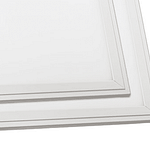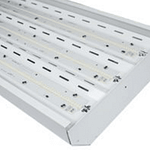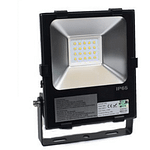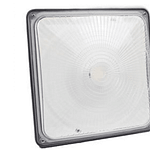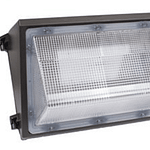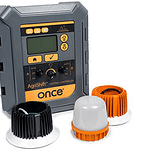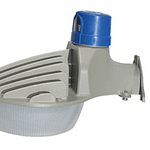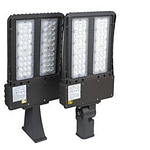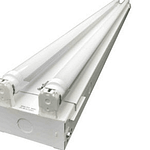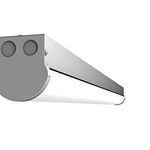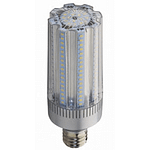LED lights come in all shapes and sizes, and are able to replace any traditional bulb you throw in its path. Yet, LEDs have so much more to offer than traditional bulbs, such as color temperature, lumen count, efficacy and much more. This can make finding the right LED bulb confusing. Today, we are going to talk about how you can choose the right LED color temperature for your space, based on factors such as available natural lighting, activity, desired ambiance and more!
LED Color Temperatures: Which is Which?
Color temperatures are measured in Kelvins and range in color from warm hues to cool hues. The most common LED lights you’ll find range from 1000k to 10,000k. The lower the number, the warmer the color. The higher the number, the cooler the color.

It is often a misconception that all LED lights are bright white, even blue, in color. Based on the image above, you can see that LEDs come in a variety of color temperatures that help create warm, cozy lighting on the lower end of the spectrum, while also creating a bright, clean look with white and blue lighting on the higher end of the spectrum.
LED color temperatures are versatile and far ranging, making it easy to find the right LED bulb for you and your space!
LED Color Temperatures: How to Choose?
Now that we know the color temperature range for LED lights, how do you go about choosing the right one for your space. Deciding which LED color temperature to choose depends on a few factors. It is important to take into account the amount of natural lighting already available in the space, what you currently use the space for, and what type of feel or ambiance you want to create with the lighting.
Choosing a Low LED Color Temperature Bulb
Picking an LED bulb on the lower end of the color temperature spectrum lends to a warmer, more relaxed lighting environment. These types of LED bulbs are most commonly found in bedrooms, living spaces, spas, and restaurants. If you are looking to upgrade your home’s lighting but don’t want the brighter, harsher LED lights, simply ask for LEDs ranging from 2000k – 4000k.
Choosing a Medium LED Color Temperature Bulb
If you are looking to upgrade lighting in your office, classroom, bathroom and the like, choosing a medium range LED color temperature is your best bet. These are considered the “workhorse” of the LED light bulbs. They are most commonly sought after and installed in places where focus and proper lighting is key. These lights are known for helping people remain focused and alert, making them a great addition in your kitchen when cooking, for your bathroom when shaving or applying makeup, or in your office space to keep productivity up. Ask for LED bulbs in color temperatures ranging from 4500k – 6000k.
Choosing a High LED Color Temperature Bulb
If you searching for LED lighting that most mimics natural daylight, you’ll want to choose an LED bulb on the higher color temperature spectrum. These lights are bright white, often lending to blue in color, and are great for tasks that require focus and attention to detail, such as drawing, reading, carpentry, warehouse work and more. They work well when installed in places such as classrooms, hospitals, warehouses, garages and display cases. When searching for LED lighting, ask for bulbs ranging from 6500k and up!
Find the Right LED Color Temperature Bulbs with Sitler’s!
Sitler’s LED Supplies has the right LED bulb for you! You will not only find the right bulb to replace your current lighting, but you’ll also be able to choose from a variety of color temperatures. Our experienced lighting consultants will help you decide which color temperature is right for you and your space when they complete the free walkthrough and assessment! Get started today by requesting a consultation here.
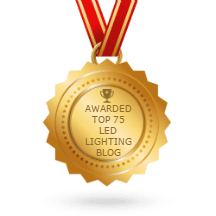
Sitler’s LED Supplies was named one of 2017’s top 75 LED blogs by Feedspot.com
Posted in LED Lighting Basics
Tagged choosing the right color temperature, LED color temperature, LED lighting




